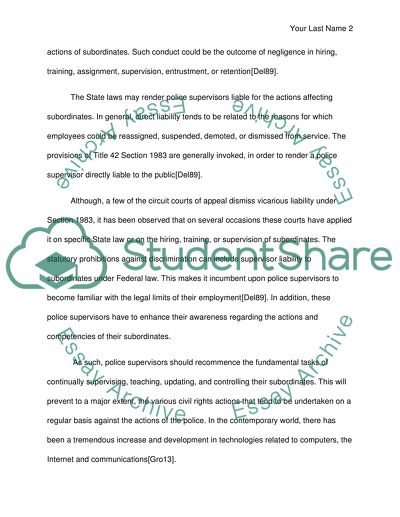Cite this document
(“Vicarious Liability for Police Supervisors Research Paper”, n.d.)
Retrieved de https://studentshare.org/law/1482004-vicarious-liability-for-police-supervisors
Retrieved de https://studentshare.org/law/1482004-vicarious-liability-for-police-supervisors
(Vicarious Liability for Police Supervisors Research Paper)
https://studentshare.org/law/1482004-vicarious-liability-for-police-supervisors.
https://studentshare.org/law/1482004-vicarious-liability-for-police-supervisors.
“Vicarious Liability for Police Supervisors Research Paper”, n.d. https://studentshare.org/law/1482004-vicarious-liability-for-police-supervisors.


